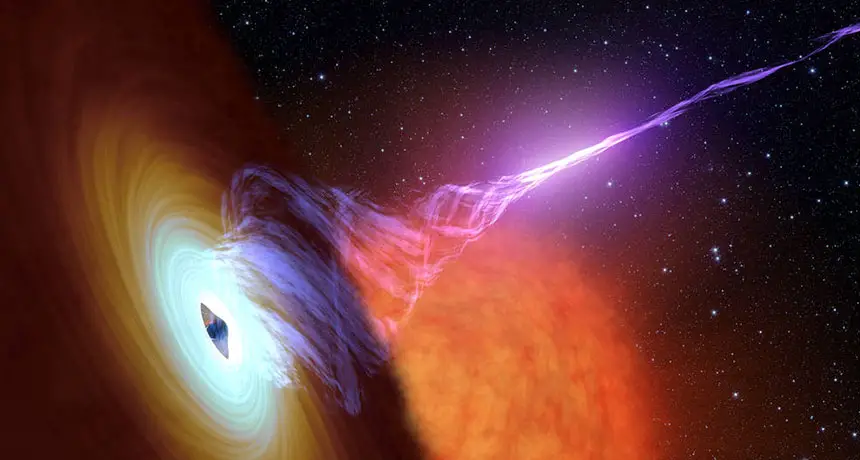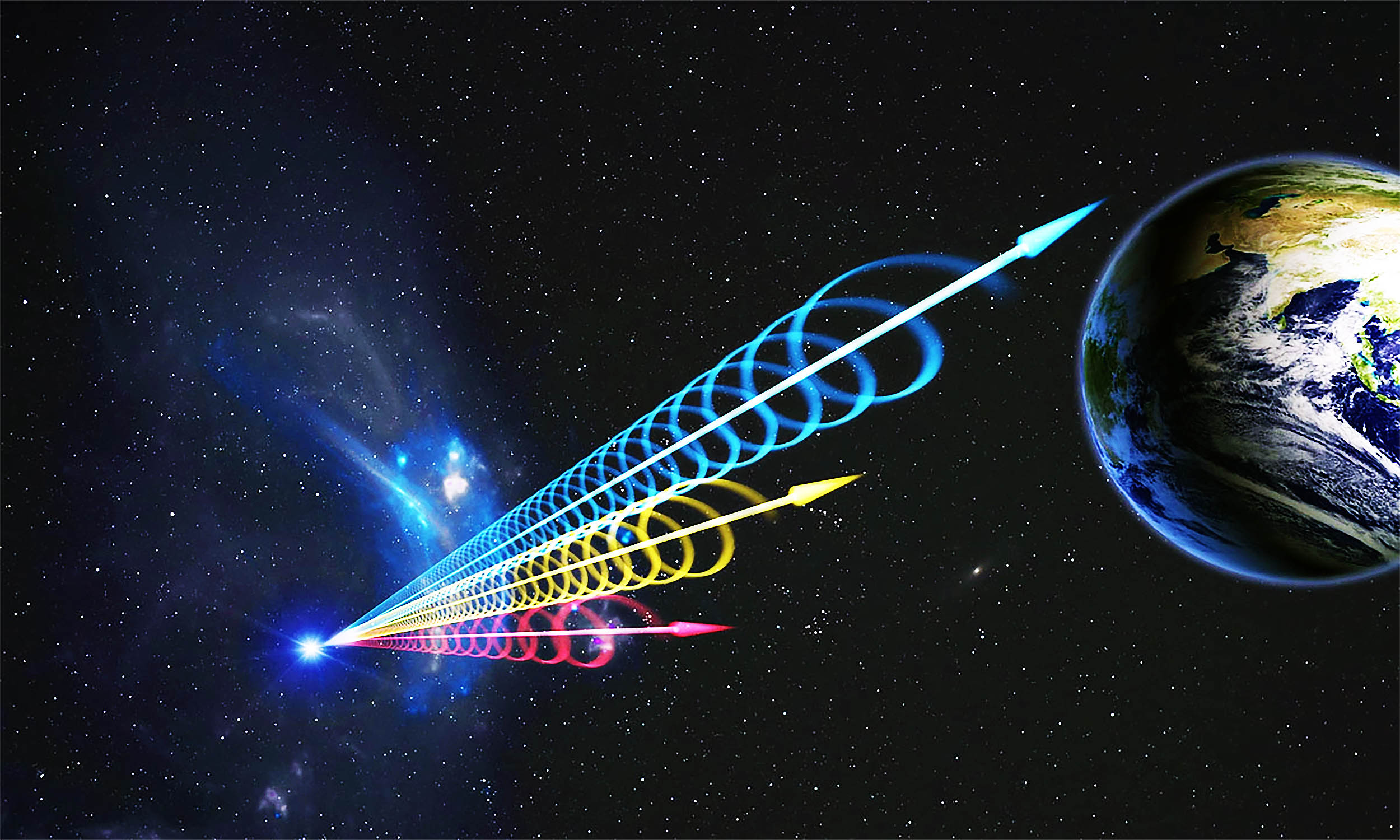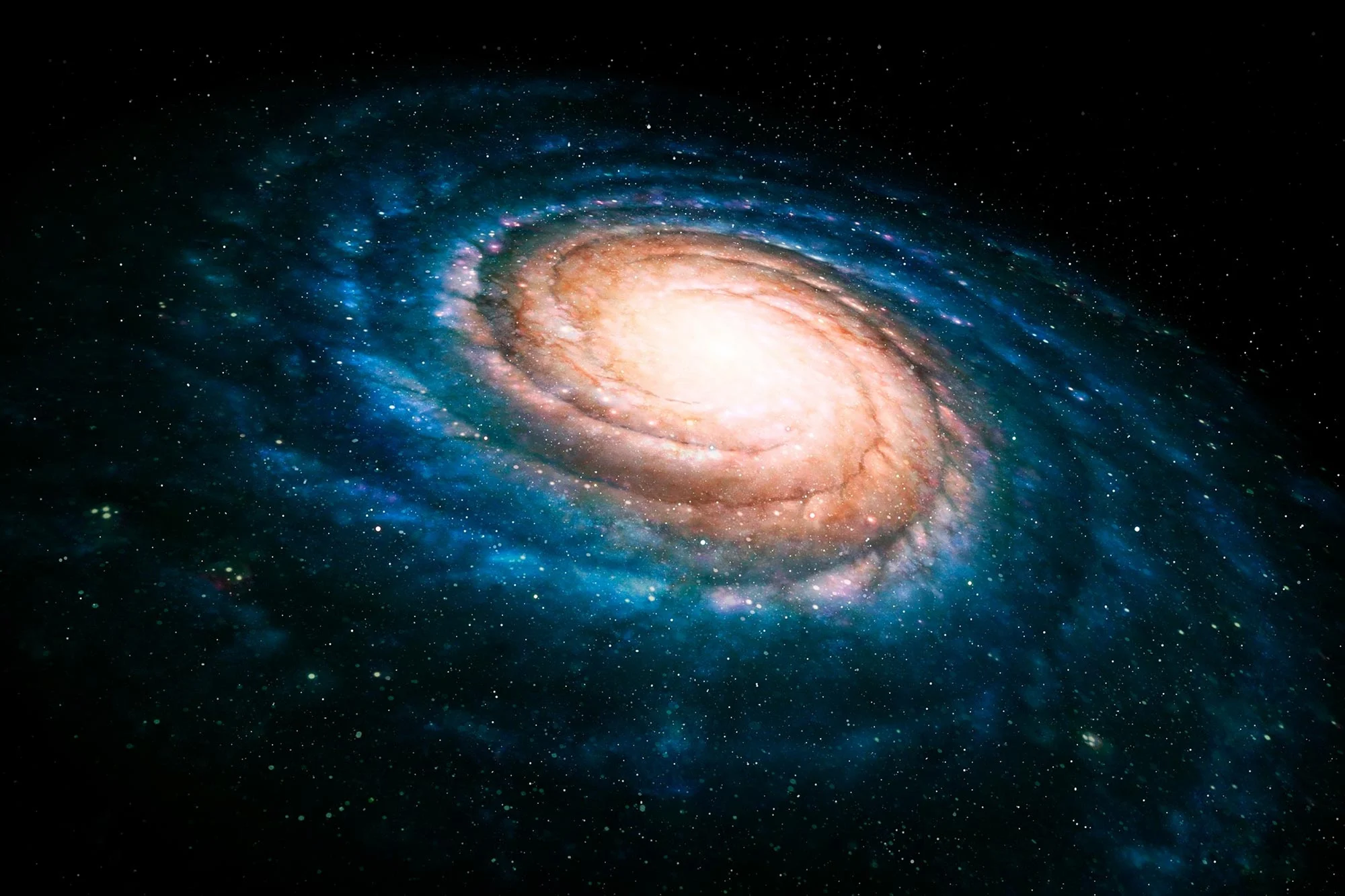Key takeaways:
- The plasma jet from galaxy M87 appears to move nearly five times faster than the speed of light due to an optical illusion, first observed by Hubble in 1995.
- While the jet isn’t actually breaking physics, its light arrives at Earth in a way that makes it seem like the plasma is moving faster than it really is.
- The jet in M87 is caused by a supermassive black hole at the galaxy’s center, which shoots out plasma at speeds close to light as it consumes nearby gas and stars.
- Jets like M87’s influence galaxy evolution by impacting star formation, and M87’s relative closeness allows scientists to study this process in detail.
- Eileen Meyer and her team have studied M87’s plasma jet over more than two decades, noting ripples and possible spirals in the jet’s movement, with new discoveries still emerging
____________________
A plasma jet from galaxy M87 appears to move five times faster than light.

n the world of astronomy, a peculiar and seemingly impossible phenomenon is unfolding in galaxy M87. A beam of plasma, or energy, is shooting out from the galaxy’s core and appears to travel at five times the speed of light, as observed by the Hubble Space Telescope. Though this illusion has been known since 1995, it continues to challenge our understanding of the universe’s laws, particularly the cosmic speed limit that states nothing can move faster than light.
An Optical Illusion of Light-Speed Travel
The jet of plasma coming from M87’s center has been known since 1918, when astronomer Heber Curtis first noticed a ray of light stretching from the galaxy. Now known to be around 6,000 light-years long, this jet is formed by hot gas and plasma being ejected from the supermassive black hole at M87’s center. As gas is pulled into the black hole, it heats up and, with the help of magnetic fields, gets focused into high-velocity jets of plasma that shoot outwards.
Though the plasma in these jets moves at speeds close to the speed of light, it never actually surpasses that limit. So why does it look like it’s moving faster? The answer lies in an optical illusion caused by the angle of the jet relative to our line of sight and the speed at which the plasma is traveling. As the jet shoots plasma particles toward us at nearly the speed of light, the light emitted from the later position of the particles reaches Earth sooner than it appears it should. This makes it seem as though the plasma blob is moving faster than light itself, when in fact it’s just an illusion based on perspective.
Understanding Plasma Jets and Galaxy Evolution
The jet from M87 is not just a fascinating trick of light; it has significant implications for our understanding of galaxies. According to Eileen Meyer, an astronomer at the University of Maryland, Baltimore County, such jets can influence star formation in galaxies by either halting or triggering it, depending on the energy they release. However, the exact mechanisms and energy levels of these jets remain unclear.

M87’s jet provides a unique opportunity for study because it is relatively close to Earth, making it easier to observe. Since 1995, Hubble has captured images of the jet that show how it changes over time. In 1999, astronomers first observed plasma rippling outward, and in 2013, Meyer extended the analysis to a 13-year observation period, revealing that the plasma may also be moving in spirals. This long-term data offers insight into the behavior of these jets and the forces at play in their creation.
Meyer’s upcoming research, based on over 20 years of observations, promises to shed more light on the mysterious behavior of M87’s jet and its impact on galaxy evolution. Despite her deep familiarity with the phenomenon, Meyer remains awestruck by the fact that we can witness objects as distant as tens of millions of light-years away visibly moving within a human lifetime.
In summary, the faster-than-light illusion created by M87’s plasma jet is a fascinating optical effect that offers valuable insight into the nature of black hole jets and their influence on the galaxies that harbor them. As scientists continue to study these jets, they may uncover more surprises about how galaxies evolve and how the universe behaves on cosmic scales.




